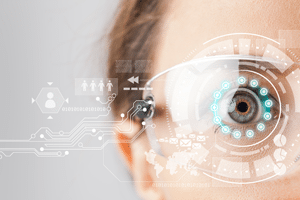Each year, marketers are re-examining the most effective and innovative ways to reach their audiences. Since its inception, augmented reality (AR) technology has been empowering adventurous marketers with new and creative ways of marketing.
 Best practice for creating AR has evolved—the platform transcending just technically impressive ‘surprise and delight’ experiences to demonstrating impressive ROI and trackable user data that form a key part of an always-on marketing strategy. As this evolution continues, it’s important to anticipate the shifts in the AR landscape that marketers can leverage in the coming year.
Best practice for creating AR has evolved—the platform transcending just technically impressive ‘surprise and delight’ experiences to demonstrating impressive ROI and trackable user data that form a key part of an always-on marketing strategy. As this evolution continues, it’s important to anticipate the shifts in the AR landscape that marketers can leverage in the coming year.
Here are three major developments in AR that marketers who want to win should be paying attention to.
1. Telling A Better Story Becomes Even More Important
Customers are increasingly eager to learn more about the stories of brands they support. The challenge all brands and marketers face in our connected and immersive digital world is to tell their story in a compelling and meaningful way.
The experience-focused nature of AR is a great way to meet this customer demand, and we’ve seen businesses of all sizes realize that it’s a marketing method worth investing in. However, the more accessible AR becomes, the more important it is to use it in a unique and creative way that showcases a brand’s purpose. This could range from giving audiences a more intimate look at the inner workings of the brand in a way that goes deeper than an Instagram channel, to displaying more relevant and contextual information about a product that may impact the potential customer.
As a marketer, you want people to walk away with a powerful impression of your brand. AR is already kicking this into high gear, and this year it will take creativity and an understanding of what does and does not work for brands to set themselves apart.
Other articles you might enjoy:
2. Mobile-Web AR Will Become More Common
It is true that we are gradually entering a time wherein native apps are becoming the most common source of services and utilities for users. That being said, we also expect to see a surge in mobile-web AR.
The truth is that not every brand has the time and resources to create and maintain a polished app, but the great news is that AR doesn’t necessarily require one. Options for adding web-based AR into a brand’s toolkit gives a similar amount of access to users. The alternative is to utilize social media apps with AR incorporated into them that users are likely to already have on their phones. But while this may offer scale, they are not always capable of meeting the specific strategic needs of the brand, with the audience reach limited to that specific platform.
Marketers will find mobile-web AR more appealing because it’s more flexible than social media quick-fixes, and more budget-friendly than maintaining an app without sacrificing the effectiveness of reaching users through their mobile devices.
3. There Will Be A Mainstream Push For Consumer MR
Mixed Reality (MR) is opening up a new canvas for storytelling, showing its potential to be a powerful tool for product visualization, learning, prototyping, events and consumer engagement. However, it has some challenges to face.
Magic Leap recently released its first developer-focused MR hardware to somewhat mixed reviews, which demonstrates the gap between admirable ambition and the current limitations of available technology. That being said, it demonstrates something else: the interest, drive, and creativity is all there, waiting to be tapped. The market is just developing for MR and, given the enormous potential for education and business, we expect major developments across the next year. The consumer proposition is getting closer, and when the price-point of dedicated hardware devices is optimum, we might see that potential finally flourish. It takes daring first steps, and it is likely that Magic Leap will inspire better iterations with marketers in mind.
All of these trends signal an exciting and new overarching direction for AR. The technology and its implementation is beginning to evolve from a fetching gimmick to a legitimate branding element that has the potential to continually engage customers beyond an initial interaction.
Sooner than later, we expect these trends to compound into AR becoming a consistent part of a customer journey, and an ever-evolving technology in a marketer’s toolkit. Looking even further down the road, AR has the potential to provide permanent digital discovery driven by daily information and utility. Brands that want to be ahead of the wave will be jumping aboard as soon as possible, and 2019 is going to be providing more and better entry points than ever before.
Max Dawes is partnerships and marketing director at Zappar.



